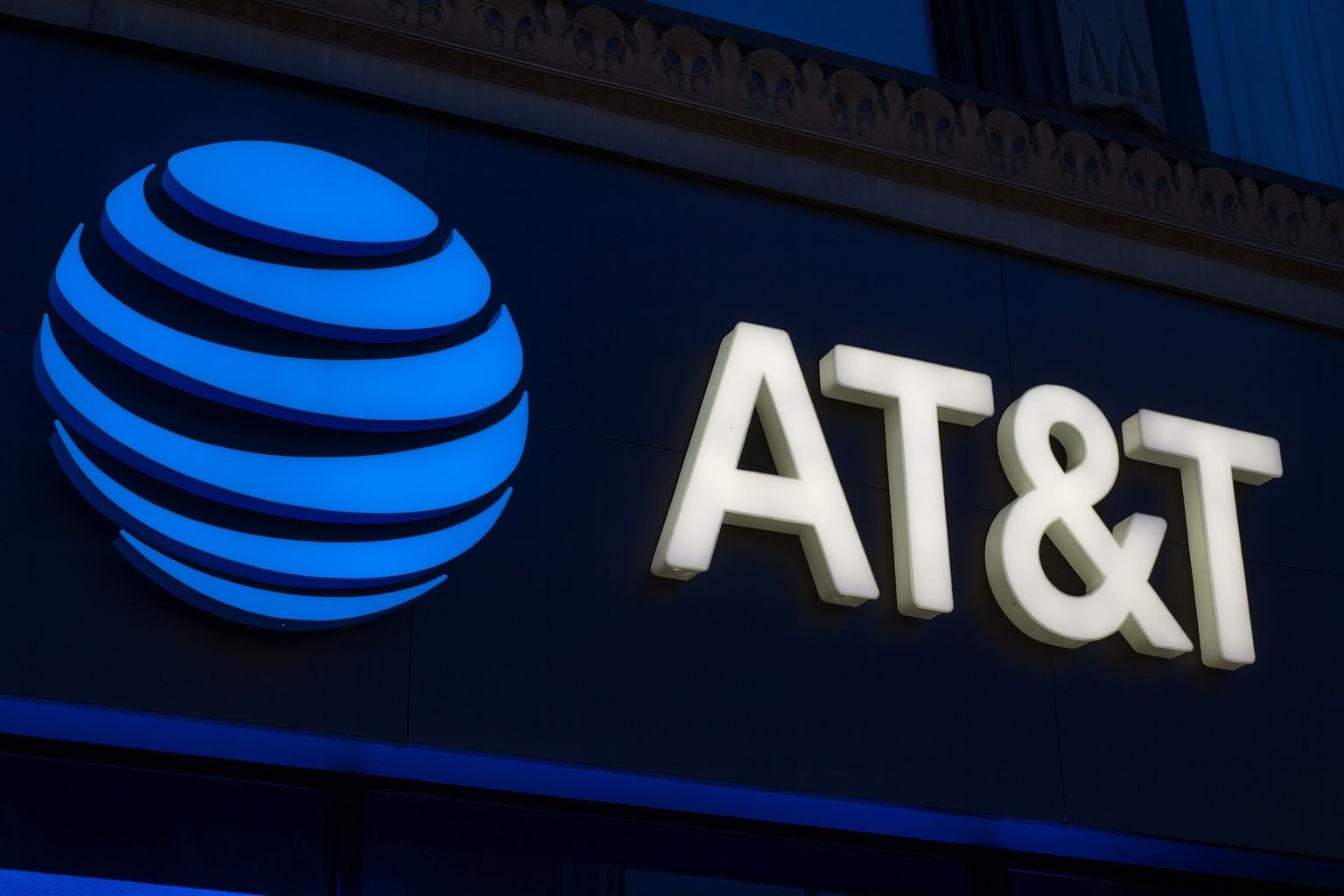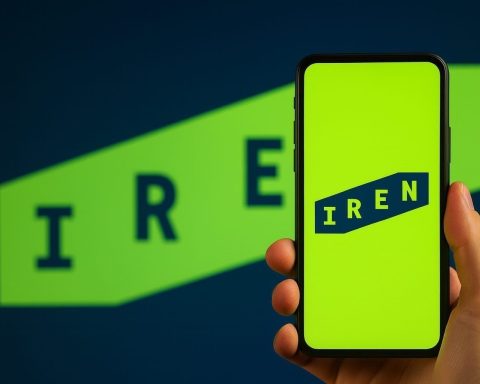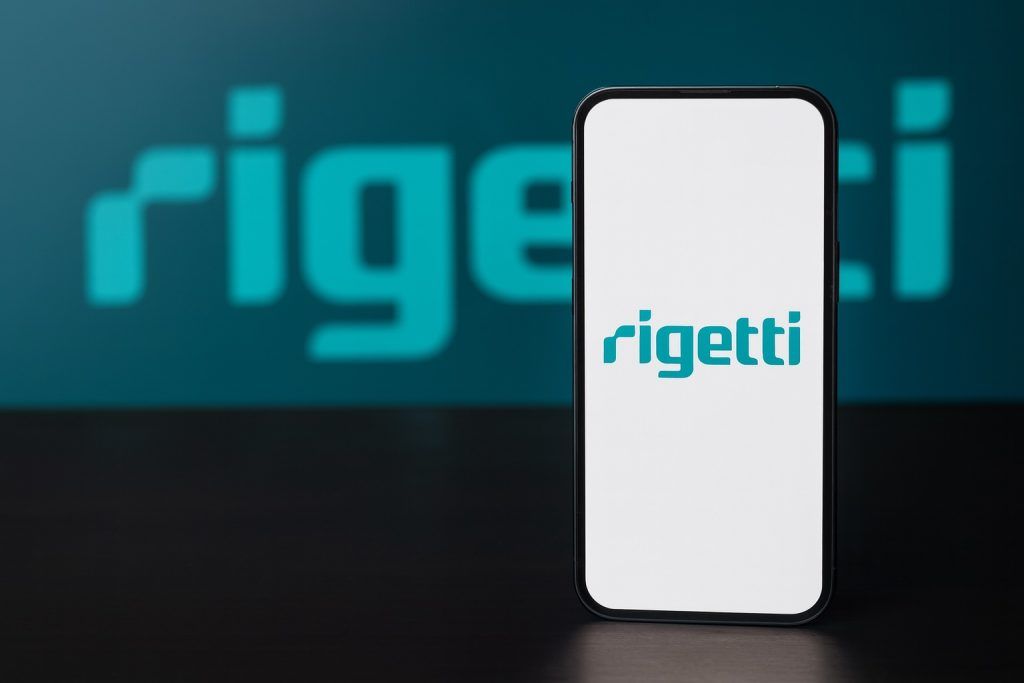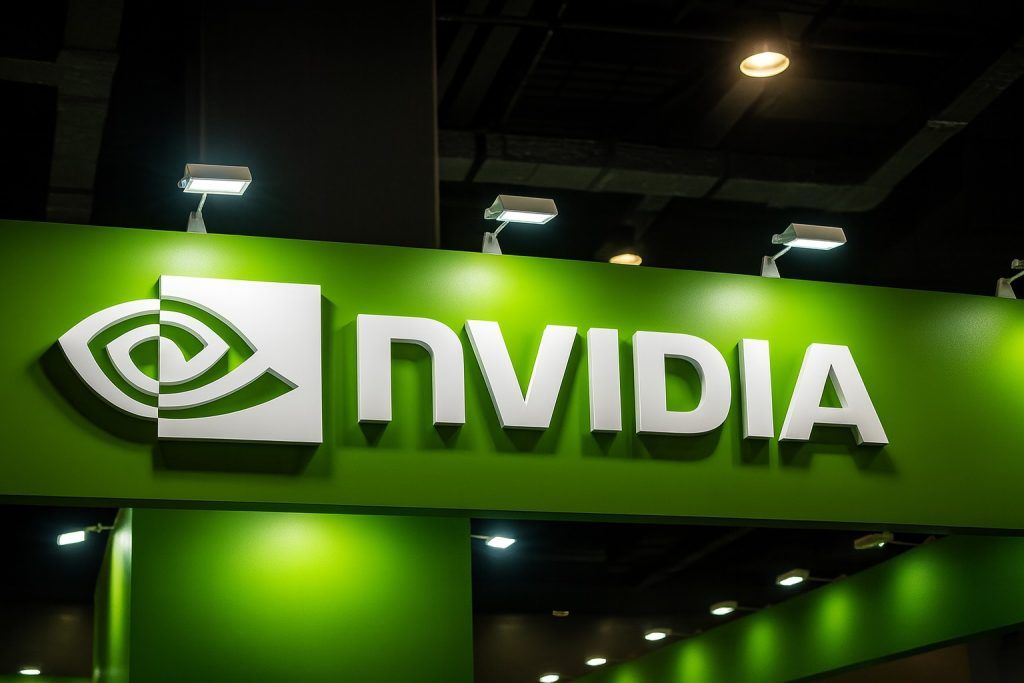Key Facts (as of Oct. 22, 2025):
- Share Price & Performance: AT&T Inc. (NYSE: T) stock trades in the mid-$26 range, roughly flat in recent days (around $26.34 at last week’s close) [1]. Shares are up about 20% year-over-year, though they have lagged the broader market over the past month [2]. In the last 12 months, AT&T stock has ranged from a low near $21 to a high just under $30 [3], reflecting a moderate rebound in 2025.
- Q3 2025 Earnings Beat: On October 22, AT&T reported Q3 revenue of $30.7 billion (a +1.6% yearly increase) and adjusted EPS of $0.54, matching analyst forecasts [4]. GAAP EPS came in at $1.29 (boosted by a one-time $5.5B gain from a DirecTV asset sale) [5]. Importantly, 405,000 postpaid wireless phone subscribers were added in Q3 – far above the ~334,000 expected [6] – alongside 288,000 fiber broadband net adds and 270,000 fixed wireless (“Internet Air”) adds. The strong subscriber growth fueled a ~4% jump in AT&T’s stock price in pre-market trading [7]. AT&T reaffirmed its full-year guidance for 2025, including ~$1.97–$2.07 in adjusted EPS, and maintained its outlook for low-single-digit revenue growth and mid-teens fiber broadband growth [8].
- 5G & Fiber Investments: AT&T is doubling down on its core connectivity business. In August, the company announced a $23 billion acquisition of wireless spectrum licenses from EchoStar, adding a huge 50 MHz of mid-band and low-band spectrum nationwide to bolster its 5G network [9]. And in May, AT&T agreed to buy Lumen Technologies’ consumer fiber internet business for $5.75 billion, bringing ~1 million new fiber subscribers and expanding AT&T’s fiber footprint into key cities like Denver, Phoenix and Seattle [10]. These strategic deals aim to strengthen AT&T’s wireless and fiber coverage for the long term. Management says the spectrum and fiber acquisitions “bolster and expand our spectrum portfolio” and will enhance customers’ 5G wireless and home internet experience [11].
- Streamlining & Financial Moves: AT&T has sharpened its focus on telecom by exiting non-core ventures and shoring up finances. In July, it sold its remaining DirecTV stake, fully leaving the legacy pay-TV business [12]. Management reiterated 2025 financial targets and unveiled plans for $20 billion in share buybacks through 2027 [13] – a signal of confidence in AT&T’s cash flows. The company plans to roughly double its fiber internet reach to 60+ million locations by 2030 (including acquisitions/partnerships) [14]. AT&T’s debt remains high (~3× net debt/EBITDA after the spectrum deal), but it vows to cut leverage to ~2.5× within 3 years [15], aided by an expected $6.5–8 billion in tax benefits through 2027 [16].
- Wall Street Sentiment & Outlook: Analysts have a mixed but generally positive view on “T.” Goldman Sachs recently reiterated a “Buy” rating with a $32 price target, calling AT&T’s big 5G spectrum purchase a “smart long-term move” that strengthens its market position [17]. By contrast, Barclays downgraded the stock to “Hold” (Equal Weight), arguing AT&T’s recent rebound “largely reflects [its] operational gains” and flagging intense competition and high debt [18]. The consensus rating is Moderate Buy with an average price target around $30–31 (roughly 15% above current levels) [19]. Investors are drawn to AT&T’s hefty dividend (about a 4.2% yield at current prices) and cheap valuation – the stock trades at only ~13–14× forward earnings, well below the ~21× telecom industry average [20]. However, slow growth and ongoing wireless price wars temper some of the optimism [21].
AT&T Stock Price & Recent Performance
AT&T shares have been range-bound around the mid-$20s for most of October, even as the broader market rallies to new highs [22]. The stock closed last week around $26.34 [23] and has moved little in the days heading into the earnings report. This leaves AT&T essentially flat month-to-date, in stark contrast to the S&P 500 and Dow Jones Industrial Average, which are hovering near record levels after a strong mid-October surge [24]. Year-to-date, AT&T’s ~15–20% stock gain in 2025 has trailed the tech-heavy Nasdaq’s performance over the same period [25]. Still, zooming out, AT&T has climbed roughly 20% from a year ago, outperforming rival Verizon in that 12-month span [26]. The stock hit a 12-month high near $29.79 over the summer before pulling back [27], and its 52-week low was about $21 (reached late last year amid broader telecom sector doldrums) [28].
As a telecom equity, AT&T tends to be less volatile than the market. Its beta is low (~0.4) – a sign that the stock moves only about 40% as much as the overall market on average [29]. This defensive character is also reflected in AT&T’s reliable dividend, which has anchored the share price. At around $26 per share, AT&T’s annual dividend of $1.11 yields roughly 4.2% [30]. That payout was reset in 2022 (when AT&T cut its dividend during a corporate restructuring), but the yield remains attractive to income investors. While Verizon’s stock yields an even higher ~7% after a larger selloff [31], AT&T’s recent price recovery and dividend stability have made its yield solid albeit not the highest in the sector [32]. Notably, the company just declared its next quarterly dividend of $0.2775 per share (payable November 3, 2025), underscoring its commitment to shareholder payouts and keeping the yield in the 4% range [33].
Broader market conditions could turn in AT&T’s favor as well. With the Federal Reserve widely expected to cut interest rates later this month [34], high-dividend stocks like AT&T may attract renewed interest if bond yields decline. Lower rates make AT&T’s 4%+ yield comparatively more enticing versus fixed-income investments. (Of course, any Fed easing would also signal some economic concerns, which could have mixed effects on a stable, economically-sensitive business like telecom.) For now, investors have been in “wait-and-see” mode on AT&T [35], keeping the stock in a holding pattern ahead of earnings. The Q3 results on Oct. 22 are seen as a potential catalyst to finally break the stock out of its tight range – for better or worse [36]. With those results now in hand, early indications are positive: AT&T’s stronger subscriber numbers have given the stock a pre-market boost, hinting that a breakout to the upside may be underway.
Q3 2025 Earnings Highlights
AT&T’s third-quarter earnings report (released Oct. 22) delivered solid results and some upside surprises in key areas. Revenue for Q3 totaled $30.7 billion, a modest 1.6% increase year-on-year [37]. This was just a hair below Wall Street’s ~$30.9B estimate [38], as phone equipment sales were a bit softer than expected. Profitability was stable: adjusted earnings came in at $0.54 per share, exactly in line with analyst forecasts [39] (though down from the year-ago quarter, as anticipated). On a GAAP basis, EPS was $1.29, but that figure was boosted by a one-time gain of roughly $5.5 billion from the sale of AT&T’s stake in DirecTV [40]. Excluding that accounting gain, the underlying earnings performance matched expectations, indicating no big surprises in the core business financials.
The real bright spot in AT&T’s quarter was subscriber growth. The company added 405,000 net postpaid wireless phone customers in Q3, decisively topping consensus forecasts of around 334,000 adds [41]. This marks AT&T’s strongest wireless user growth of the year and underscores effective execution in a very competitive market. Executives credited aggressive promotions and bundled service deals for the gains – AT&T offered heavy discounts around the latest iPhone launch and continues to entice customers with bundles that pair wireless plans with home internet [42]. Those efforts paid off: more than 41% of AT&T’s fiber broadband customers now also subscribe to an AT&T mobile plan [43], reflecting successful cross-selling. Additionally, fiber broadband net additions were 288,000 for the quarter, and the newer fixed wireless access service (branded “Internet Air”) added 270,000 customers [44] – solid growth in home internet segments. Crucially, customer churn remained low at about 0.92%, indicating strong retention of existing subscribers even as competitors fight for market share [45].
Growth in these key areas helped offset weaknesses elsewhere. AT&T’s Mobility (wireless) service revenues rose to $16.9 billion (up +2.3% YoY) on the back of those subscriber gains [46], and consumer fiber broadband revenue jumped +16.8% (to $2.2 billion) with the expanding customer base [47]. On the other hand, legacy businesses continue to drag: business wireline revenues fell about 7.8% year-over-year as traditional landline and older data services decline [48]. Equipment sales were a mixed bag – higher smartphone upgrades drove equipment revenue up ~6%, but that came at the cost of higher marketing and device subsidy expenses [49]. The net effect was that overall revenue, while growing modestly, slightly missed analyst projections for the quarter [50]. Still, the strength in AT&T’s core wireless and fiber operations is the headline, and it underscores that the company’s strategic focus on connectivity is yielding results.
Financially, AT&T’s cash flow remains robust, supporting its investor-friendly capital returns. Operating cash flow exceeded $10 billion in the quarter [51], helped by the steady subscriber revenues and cost controls. This allowed AT&T to buy back $1.5 billion worth of its stock during Q3 [52], on top of paying its regular dividends – a sign of confidence from management in the company’s cash generation. The company also reiterated its full-year 2025 outlook after Q3. It still expects adjusted earnings per share of roughly $1.97–$2.07 for the full year and only low-single-digit growth in overall revenue [53]. Importantly, AT&T maintained its free cash flow guidance (around $16 billion for 2025) [54], which is key to sustaining dividends and buybacks. In short, the Q3 report showed steady financials with a splash of subscriber-driven outperformance, and no signs of deviation from the 2025 plan. The positive reaction – AT&T’s stock jumped about 4% in pre-market trading on the news [55] – indicates that investors were encouraged by the subscriber momentum and the company’s ability to hit its targets in a competitive environment.
5G Spectrum and Fiber Expansion Strategy
Under CEO John Stankey, AT&T in 2025 has been making bold bets on network infrastructure – essentially wagering that heavy investment now in 5G wireless and fiber-optic broadband will secure future growth and market dominance. The most eye-catching move came in late August when AT&T agreed to purchase a vast trove of wireless spectrum from EchoStar for $23 billion [56]. This single deal gives AT&T roughly 50 MHz of additional spectrum nationwide (about 30 MHz in mid-band frequencies around 3.45 GHz and 20 MHz in low-band 600 MHz) [57]. Mid-band spectrum is prized for 5G deployments because it offers an ideal mix of range and data capacity, meaning AT&T can significantly boost its 5G coverage and speeds with these airwaves. Stankey has touted the spectrum buy as a game-changer: “This acquisition bolsters and expands our spectrum portfolio while enhancing customers’ 5G wireless and home internet experience in even more markets,” the CEO said [58]. In other words, AT&T sees it as critical to maintaining a network edge over rivals Verizon and T-Mobile in the coming years.
That said, AT&T paid top dollar for those frequencies. The $23 billion price tag is roughly $7 billion more than what the spectrum was estimated to fetch at auction prices [59]. Stankey has candidly acknowledged the high cost, essentially admitting AT&T paid a premium versus what Dish Network (the seller’s partner) originally spent, but he framed it as the cost of doing business to secure strategically vital assets [60]. The deal, expected to close in 2026 pending regulatory approval, will slightly increase AT&T’s debt load (pushing net debt to about 3× EBITDA) [61]. However, the company insists it can manage this leverage – pointing to anticipated tax benefits and its long-term debt reduction plan – and believes the spectrum boost is well worth it for the long-run competitive advantage it confers.
On the fiber broadband side, AT&T is pursuing an equally aggressive expansion. In May 2025, the company struck a deal to acquire Lumen Technologies’ consumer fiber business for $5.75 billion [62]. This acquisition will bring AT&T approximately 1 million additional fiber customers across multiple metro areas, significantly extending its fiber network into new cities. Markets like Denver, Phoenix, Orlando, and Seattle – which had been outside AT&T’s traditional footprint – are slated to become AT&T fiber territories once the deal closes (expected in the first half of 2026) [63]. Essentially, AT&T is buying Lumen’s entire consumer ISP operation (branded as Quantum Fiber) in those regions, which immediately gives it a larger national broadband presence. The company plans to fold these assets into a new subsidiary and has even floated the idea of selling a minority stake in that fiber unit to a financial partner to help fund the growth [64] – a model AT&T has used before via joint ventures. Fiber-to-the-home is a key growth engine for AT&T, and the Lumen deal, alongside the company’s own build-outs, is part of a plan to double AT&T’s fiber footprint to over 60 million locations by 2030 [65]. More fiber in the ground means more homes and businesses that AT&T can sell gigabit internet to – and potentially bundle with wireless service – reinforcing its strategy of being America’s premier connectivity provider across both mobile and fixed internet.
Beyond these two headline acquisitions, AT&T has been undertaking other business developments to sharpen its competitive edge. The company recently launched a new platform called FirstNet Fusion – an advanced mission-critical communications network for first responders and public safety agencies [66]. This move builds on AT&T’s government contract to provide FirstNet (the nationwide public safety broadband network), adding features like next-gen 9-1-1 dispatch and push-to-talk capabilities to attract more emergency services users. On the consumer side, AT&T is leveraging its partnership with Apple – for example, it began taking pre-orders for the latest iPad Pro (with Apple’s M5 chip) in mid-October, timing it with Apple’s release to drive interest in new device sales and data plans [67]. Not all developments are about growth; some are about profitability. In a bid to offset rising costs, AT&T announced it will implement a $5 per month price increase on home internet plans effective December 1, 2025 [68]. This marks the third year in a row of such a broadband rate hike, which the company says is necessary to help fund its hefty investments in fiber upgrades and 5G spectrum [69]. While a price increase risks some customer churn, AT&T has exempted recent customers from the hike and is betting that most users will accept a slightly higher bill in exchange for continued network improvements. Together, these initiatives – from massive spectrum and fiber acquisitions to new product offerings and pricing tweaks – paint a picture of AT&T on the offensive, aiming to grow its network capabilities and revenue streams in an increasingly data-driven world.
Dividend, Debt & Shareholder Returns
AT&T’s shareholder value proposition has long rested on its generous dividend, and that remains true in 2025. The company’s quarterly dividend is $0.2775 per share, amounting to $1.11 annually – a payout it maintained through the past year after a reduction in 2022. At the current stock price, this translates to a healthy ~4.2% dividend yield [70]. For many investors, especially those seeking income, AT&T’s dividend is a key attraction. The telecom giant has emphasized that it can sustain this dividend comfortably: its free cash flow (projected around $16 billion for 2025) covers the roughly $8 billion in annual dividend payments with room to spare [71]. In fact, AT&T’s Q3 free cash flow easily funded the quarter’s dividend outlay (~$2 billion) and still left enough for significant share repurchases. The company’s Board formally declared the next dividend to shareholders – payable November 3, 2025 – reaffirming that investors will continue to receive regular income [72]. AT&T’s CFO has noted that the dividend payout ratio (dividends as a percentage of free cash flow) is quite manageable, often around the 45–55% range, which provides a buffer to invest in the business and reduce debt while still rewarding shareholders.
In addition to dividends, AT&T is returning capital to shareholders via buybacks, signaling confidence in the stock’s value. The company authorized a $20 billion share repurchase plan spanning 2025–2027 [73]. During Q3 alone, AT&T bought back $1.5 billion of its own shares [74]. These buybacks not only return cash to investors but also have the effect of lowering the share count, which can boost earnings per share over time. The aggressive repurchase program indicates that management sees the current stock price as undervalued and a good use of excess cash. It’s worth noting that AT&T can pursue these buybacks now after having paused them in recent years – a sign that the company’s massive post-merger restructuring phase (following the WarnerMedia spinoff in 2022) is behind it, and it’s back to a focus on core telecom operations and shareholder returns.
Managing AT&T’s debt load remains a critical part of the financial strategy. Telecom is a capital-intensive business, and AT&T carries one of the largest debt piles in corporate America – over $130 billion in net debt, equating to roughly 3× its EBITDA earnings after the latest spectrum purchase [75]. Reducing this leverage is a priority for the company. AT&T has committed to deleveraging to about 2.5× net debt/EBITDA within the next three years [76] (around 2028). How will it achieve this? Partly through earnings growth, but also through disciplined use of free cash flow (after paying dividends). The company is directing a portion of its cash to debt reduction and is likely to taper buybacks if needed to meet debt targets. Additionally, AT&T expects to realize roughly $6–8 billion in tax benefits over 2025–2027 [77] thanks to recent legislation and tax-loss carryforwards – extra cash that can be used to pay down debt. AT&T’s sale of non-core assets has also helped; for instance, the July sale of its remaining DirecTV stake not only removed a distraction but also provided funds (and a one-time gain) that improved the balance sheet [78]. The company in recent years also spun off WarnerMedia and other assets, streamlining itself back into a pure-play communications company. These moves, combined with steady cash generation from its wireless and broadband businesses, are intended to safeguard AT&T’s investment-grade credit profile and give it the financial flexibility to keep investing in growth areas.
For investors, AT&T’s financial management offers a mix of stability and modest growth. The dividend appears secure and is even poised to become more attractive if interest rates decline (since a 4% yield stands out more when bond yields fall). Meanwhile, the share buybacks and debt reduction should gradually improve the company’s per-share earnings and risk profile. AT&T’s ability to execute on its fiber expansion and integrate its acquisitions on budget will be important – overspending or under-delivering could constrain cash flow. But so far in 2025, the company has hit its financial targets and maintained a conservative approach to guidance. AT&T’s leadership has repeatedly emphasized that shareholder returns (dividends and buybacks) are a priority and will not be sacrificed even as the company invests heavily in network upgrades [79]. That message, plus the tangible actions like the new buyback program, have helped restore some confidence among investors after a period of uncertainty. It’s a balancing act: AT&T is working to fund the future (5G, fiber and new services) while rewarding shareholders in the present, and the market will be watching closely to ensure they can continue to do both.
Wall Street Analysis and Forecasts
Wall Street’s view on AT&T has improved over the past year, though it’s not uniformly bullish. The stock’s roughly 20% climb in the past 12 months has outpaced the broader telecom industry (which is up only ~2% in that time) [80], leading some analysts to conclude that much of the easy upside has been realized. AT&T currently holds a Zacks Rank #3 (Hold) and, on average, analysts rate it a “Moderate Buy,” reflecting cautious optimism [81]. According to a compilation of analyst targets, the consensus 12-month price target is about $30.5–$31 per share [82]. Hitting that would imply a ~15% gain from today’s price – a solid return when combined with the 4% dividend yield. However, few expect AT&T to skyrocket; rather, the general outlook is for steady, modest growth in the coming years.
Several analysts have published updated takes around AT&T’s recent moves. Goldman Sachs, for instance, reiterated its Buy rating with a $32 price target after AT&T announced the big spectrum acquisition. Goldman’s analysts applauded the bold 5G investment, calling it a “smart long-term move” that should fortify AT&T’s position in wireless and fixed wireless services [83]. “Even though the license came at a high price, it strengthens the company’s position in the mobile market,” one Goldman analyst noted, also praising AT&T’s focus on subscriber growth and the sizable buyback plan [84]. In Goldman’s view, AT&T’s strategic willingness to spend now for future capacity is a positive, provided the company executes well and keeps its balance sheet in check.
On the other hand, Barclays struck a more hesitant tone. In October, Barclays downgraded AT&T from Buy to Equal Weight (Hold), effectively telling investors that the stock’s valuation was fair after its recent rebound. The Barclays team argued that AT&T’s share price already “largely reflects [the company’s] operational gains” and they flagged concerns over the competitive landscape and AT&T’s debt levels [85]. Barclays set a $30 price target (~9% upside from before earnings) [86], suggesting limited near-term upside. In their analysis, while AT&T has executed better and cleaned up its business, the U.S. telecom market remains highly competitive – with Verizon, T-Mobile, and cable companies all vying for the same customers – which could keep pressure on growth and pricing. Moreover, AT&T’s aggressive infrastructure spending, while necessary, means debt will stay relatively high, a potential risk if interest rates don’t fall or if the economy turns south.
Looking forward, earnings forecasts for AT&T point to incremental improvement, not explosive growth. The current consensus calls for AT&T to generate about $127.5 billion in revenue for full-year 2025 (roughly 2% growth) and an adjusted EPS around $2.09 [87]. In 2026, revenue is projected to tick up to about $129.3 billion with EPS approaching $2.25 [88]. These estimates imply mid-single-digit percentage growth at best – a reflection of AT&T’s status as a mature, highly penetrated business in a low-growth industry. They also assume AT&T meets its targets to continue modestly expanding wireless and fiber subscribers and that it can sustain its prices even amid competition. Notably, AT&T’s enterprise value to earnings ratio remains lower than historical norms: at ~13–14 times forward earnings, the stock is valued at a discount relative to both the overall market and the telecom sector average (~21×) [89]. This discount suggests that investors are accounting for AT&T’s slower growth and higher debt, but it also could mean there is upside if the company surprises to the upside or if industry conditions improve.
From a broader market perspective, a few macro factors could influence AT&T’s trajectory. If the economic outlook stays resilient and interest rates begin to ease, investors may gravitate more to stable, dividend-paying stocks like AT&T (as discussed, a Fed rate cut could be a catalyst for income stocks) [90]. Additionally, the stock market near record highs signals generally positive sentiment, which can lift all boats including defensives like telecoms. However, competitive dynamics will remain front and center. All eyes will be on how AT&T’s peers respond – for example, Verizon and T-Mobile have yet to report their Q3 results, and any signs of slowing in their businesses or more aggressive promotional activity will be parsed by investors. AT&T’s strong subscriber adds could push rivals to match its offers, potentially igniting another round of price wars in wireless plans (which would be good for customers but not for carrier profits). So far, AT&T’s strategy of focusing on bundle value (wireless + fiber) appears to be paying off, and its management is confident that this converged approach differentiates it in the market [91].
In summary, AT&T enters late 2025 on a cautiously optimistic note. The company has delivered consistent if unspectacular financial results, while making meaningful strides in growing its high-value subscriber base. Its ambitious investments in 5G spectrum and fiber-optic infrastructure are setting the foundation for the next decade, even as they weigh on short-term financial metrics. Most analysts agree that AT&T is fundamentally stronger than it was a couple of years ago – a more focused telecom operator with a viable long-term plan. The stock’s combination of a solid dividend, reasonable valuation, and improved execution has put it back on the radar of many investors. Yet, expectations remain measured. AT&T is not a high-flying growth stock, but rather a steady performer that could grind higher if it keeps hitting targets. As the company integrates its new spectrum and fiber assets in the coming year and continues to trim debt, investors will watch for any uptick in growth or capital returns. For now, the key takeaway is that AT&T’s core businesses are holding up well in a competitive environment, and management’s bets on network upgrades are instilling cautious confidence. If the broader market remains favorable and AT&T continues to deliver on its promises, the stock’s slow climb – bolstered by that 4%+ dividend along the way – could very well continue into 2026 [92].
Sources: AT&T Q3 2025 earnings release and conference call, TS2.Tech market analysis, Reuters and Nasdaq data, and analysts’ reports [93] [94] [95] [96]. All information is current as of October 22, 2025.
References
1. ts2.tech, 2. ts2.tech, 3. ts2.tech, 4. ts2.tech, 5. ts2.tech, 6. ts2.tech, 7. ts2.tech, 8. ts2.tech, 9. ts2.tech, 10. ts2.tech, 11. ts2.tech, 12. ts2.tech, 13. ts2.tech, 14. ts2.tech, 15. ts2.tech, 16. ts2.tech, 17. ts2.tech, 18. ts2.tech, 19. ts2.tech, 20. ts2.tech, 21. ts2.tech, 22. ts2.tech, 23. ts2.tech, 24. ts2.tech, 25. ts2.tech, 26. ts2.tech, 27. ts2.tech, 28. ts2.tech, 29. ts2.tech, 30. ts2.tech, 31. ts2.tech, 32. ts2.tech, 33. markets.financialcontent.com, 34. ts2.tech, 35. ts2.tech, 36. ts2.tech, 37. ts2.tech, 38. ts2.tech, 39. ts2.tech, 40. ts2.tech, 41. ts2.tech, 42. ts2.tech, 43. ts2.tech, 44. ts2.tech, 45. ts2.tech, 46. ts2.tech, 47. ts2.tech, 48. ts2.tech, 49. ts2.tech, 50. ts2.tech, 51. ts2.tech, 52. ts2.tech, 53. ts2.tech, 54. ts2.tech, 55. ts2.tech, 56. ts2.tech, 57. ts2.tech, 58. ts2.tech, 59. ts2.tech, 60. ts2.tech, 61. ts2.tech, 62. ts2.tech, 63. ts2.tech, 64. ts2.tech, 65. ts2.tech, 66. markets.financialcontent.com, 67. markets.financialcontent.com, 68. markets.financialcontent.com, 69. markets.financialcontent.com, 70. ts2.tech, 71. ts2.tech, 72. markets.financialcontent.com, 73. ts2.tech, 74. ts2.tech, 75. ts2.tech, 76. ts2.tech, 77. ts2.tech, 78. ts2.tech, 79. ts2.tech, 80. markets.financialcontent.com, 81. markets.financialcontent.com, 82. ts2.tech, 83. ts2.tech, 84. ts2.tech, 85. ts2.tech, 86. ts2.tech, 87. ts2.tech, 88. ts2.tech, 89. ts2.tech, 90. ts2.tech, 91. ts2.tech, 92. ts2.tech, 93. ts2.tech, 94. ts2.tech, 95. ts2.tech, 96. markets.financialcontent.com








